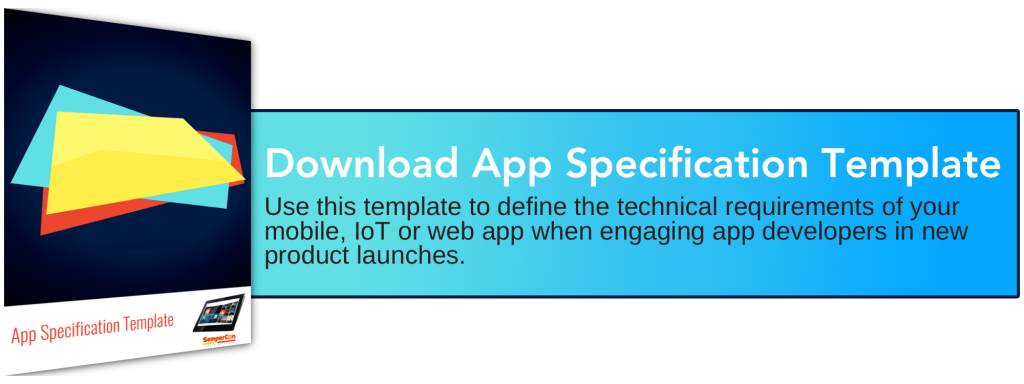Mobile, web and IoT app requirements documents act as the foundation of well-executed products. Engineers and developers use these detailed documents to transform app concepts into fully developed applications. Business leaders and entrepreneurs must provide engineers and developers with a firm understanding of the fundamental problem that their desired app is to solve. The best way to do this is by communicating the app’s purpose, background business requirements and project scope in an App Specification Sheet. Referring to this written document, technical leads will be better able to leverage their expertise, asking the right questions and further defining the processes, functionality and integrations required for a rapid, well-executed development process.
Purpose
Well-defined and -executed apps have one thing in common: they are designed with a clear problem in mind. Before preparing prototype designs, pen must be applied to paper. App creators must define why users and customers will find their app to be a compelling product. The success of the app will depend on how well app creators, developers and designers understand who is using the app.
Answer the following purpose-revealing questions:
-
What problem will your app solve? What are you trying to accomplish?
-
What is your product vision? How will your app streamline or improve current processes or facilitate new processes?
-
Are your target users aware that this problem exists for them?
-
What percentage of your audience are already actively trying to solve this problem?
-
How are alternative solutions to this problem effective and ineffective?
Assumptions
The features and functions of your app should stem from a singular root problem. Inherent in this problem are assumptions based on experiences, knowledge and other information that app creators believe to be true. Assumptions are often made in relation to user demands, technical and business requirements.
Organize your assumptions into three categories:
-
User assumptions: Any and all information about your typical app user that can influence the way your app is defined and delivered should be noted and reviewed in this section. What assumptions are you making in defining your typical app user? What is the leading device that users will use to access your app? Are your typical users sophisticated smartphone owners or are they novices who need additional handholding? What expectations do you have regarding user behavior? How will you measure the value users place in your app?
-
Technical assumptions: Which operating systems should your app work on? How flexible is your app’s technology stack? Will the app need to be started from scratch or can you leverage existing assets? How should the app function (what should it do?)? What core features will it need?
-
Business assumptions: How feasible is it that your app development timeline will match your timeline? How accurate are your estimations of the total time and financial investments associated with building your app? What is your app monetization model? Do already established branding and design guidelines exist that must be followed?
Project Scope
The project manager responsible for ensuring on-schedule delivery of the app will need to establish a project timeline, set project goals and allocate project resources. Many custom app development companies have project managers who define these requirements on behalf of app creators. They communicate both project objectives and project scope to their team of developers and engineers.
App creators and entrepreneurs should expect a high quality app development company to have a project manager who defines, optimizes, and communicates:
-
Project objectives
-
Goals
-
Sub-phases
-
Tasks
-
Resources
-
Budget
-
Schedule
Stay tuned for the next installation of our blog series, “6 Steps to Defining Functional Requirements of Mobile, Web & IoT Apps”, where we outline the steps that must be taken in preparation of creating new apps. Next up, we’ll be discussing user classes, usage scenarios and user documentation.


